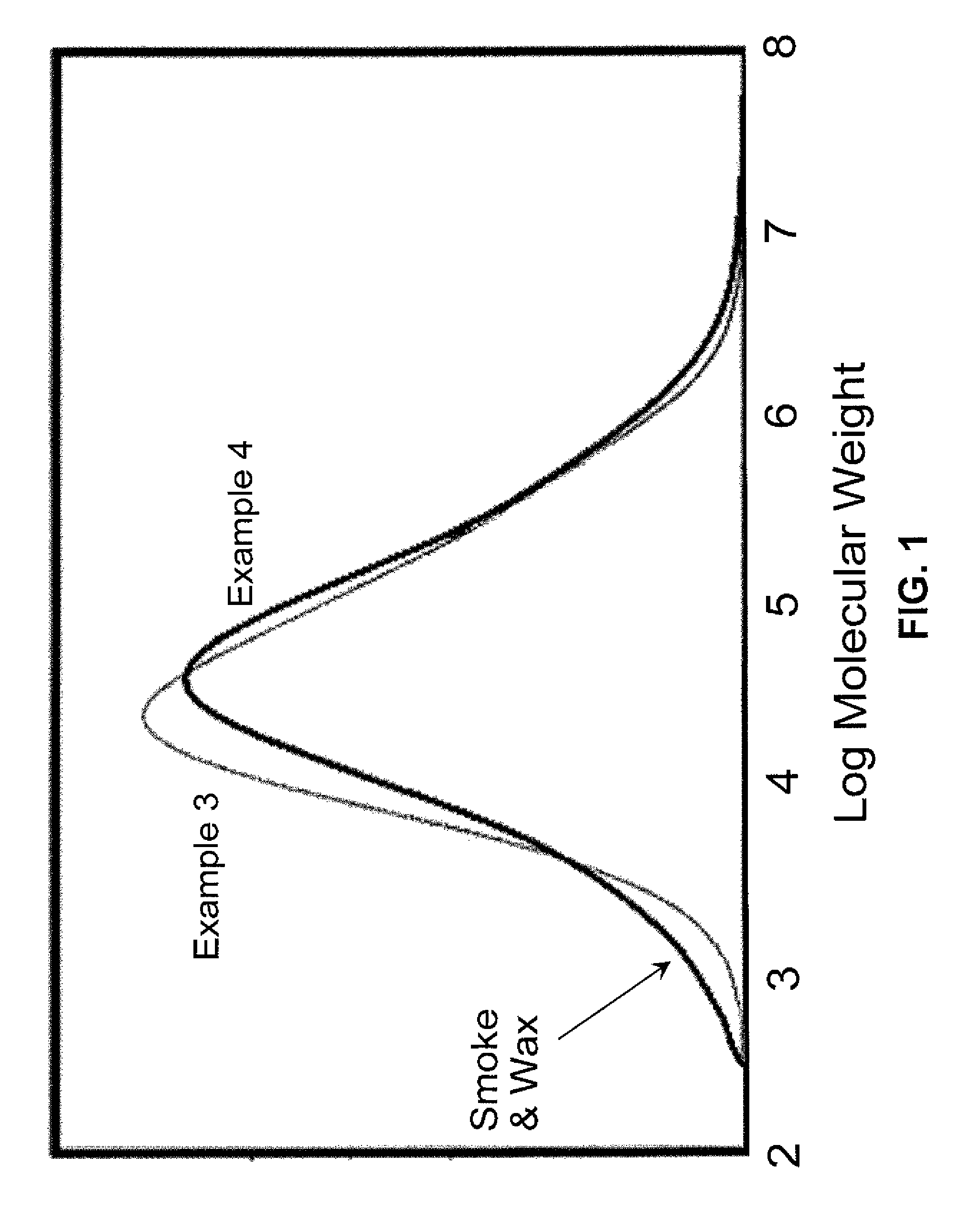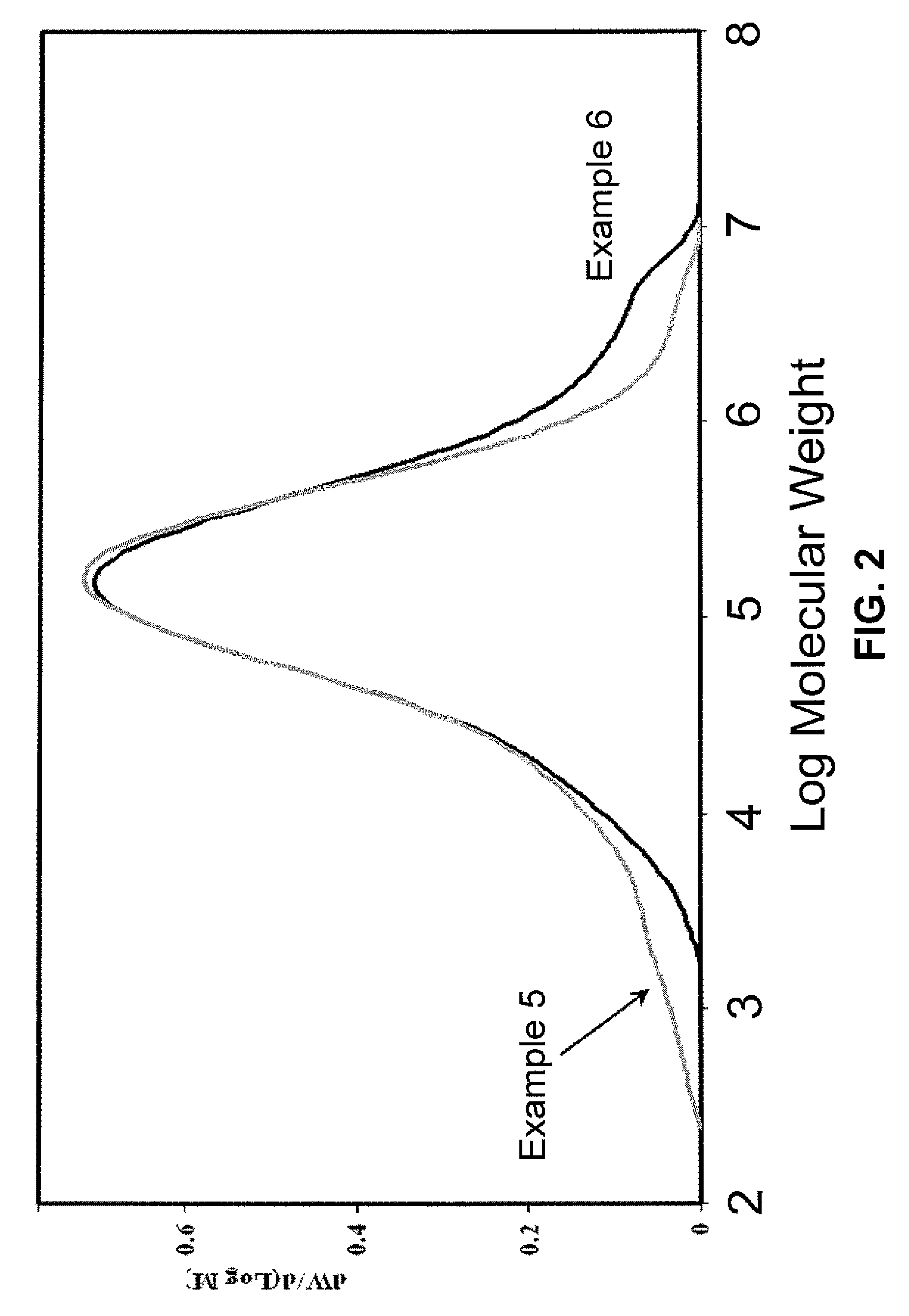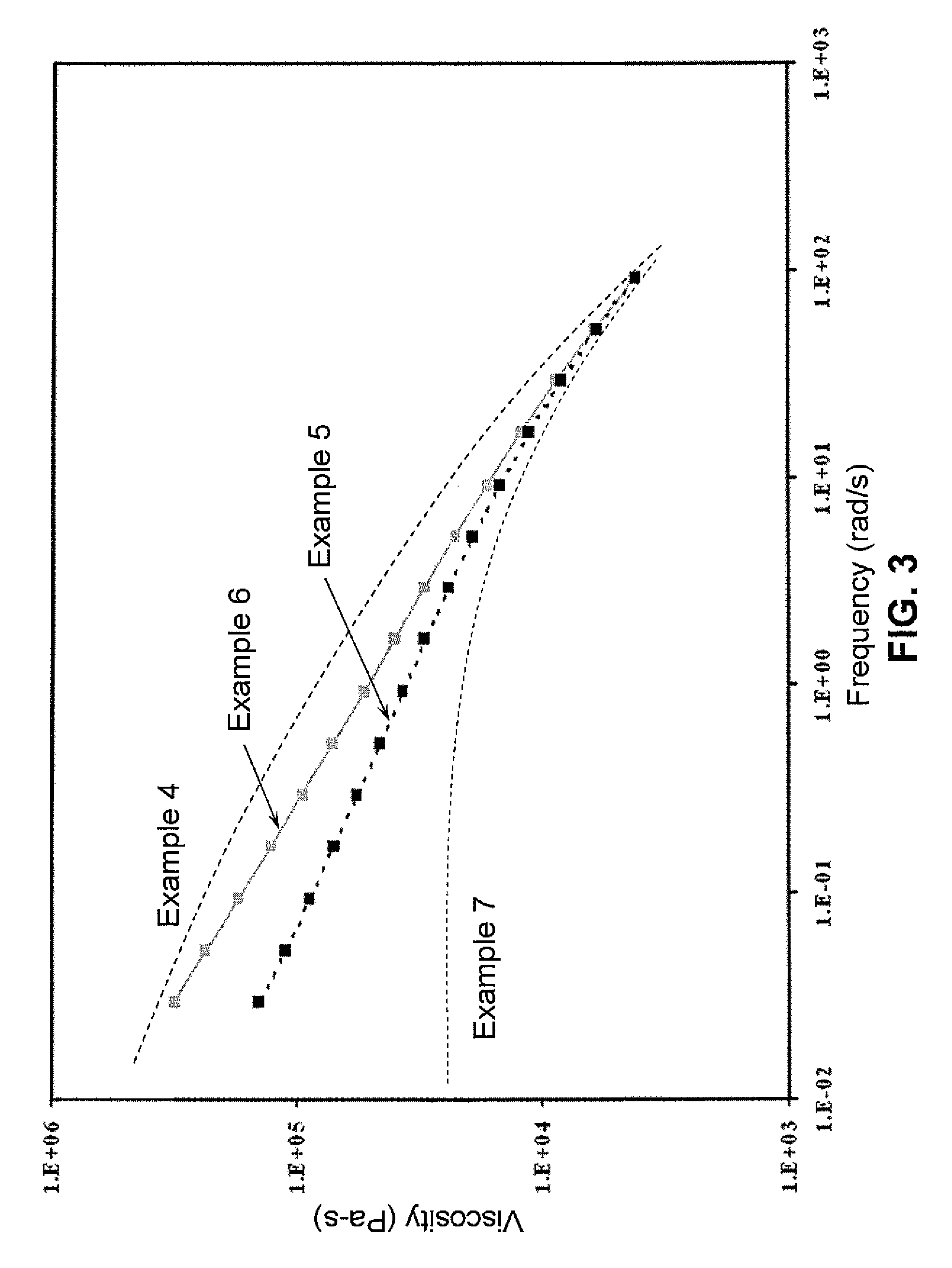Half-metallocene catalyst compositions and their polymer products
a technology of half-metallocene and catalyst, which is applied in the field of half-metallocene compounds, can solve the problems of difficult to duplicate the properties of the combination with other commercially viable catalyst systems, the molecular weight distribution of polyolefin resins produced using ballard catalysts is generally too large, and the structure of the polyolefin resin is too long
- Summary
- Abstract
- Description
- Claims
- Application Information
AI Technical Summary
Benefits of technology
Problems solved by technology
Method used
Image
Examples
example 1
Synthesis of a Fluorided Silica-Alumina Activator-Support
[0248]A silica-alumina was obtained from W.R. Grace Company containing about 13% alumina by weight and having a surface area of about 400 m2 / g and a pore volume of about 1.2 mL / g. This material was obtained as a powder having an average particle size of about 70 microns. Approximately 100 grams of this material were impregnated with a solution containing about 200 mL of water and about 10 grams of ammonium hydrogen fluoride, resulting in a damp powder having the consistency of wet sand. This mixture was then placed in a flat pan and allowed to dry under vacuum at approximately 110° C. for about 16 hours.
[0249]To calcine the support, about 10 grams of this powdered mixture were placed in a 1.75-inch quartz tube fitted with a sintered quartz disk at the bottom. While the powder was supported on the disk, air (nitrogen can be substituted) dried by passing through a 13× molecular sieve column, was blown upward through the disk at ...
example 2
Synthesis of a Sulfated Alumina Activator-Support
[0250]Bohemite was obtained from W.R. Grace Company under the designation “Alumina A” and having a surface area of about 300 m2 / g and a pore volume of about 1.3 mL / g. This material was obtained as a powder having an average particle size of about 100 microns. This material was impregnated to incipient wetness with an aqueous solution of ammonium sulfate to equal about 15% sulfate. This mixture was then placed in a flat pan and allowed to dry under vacuum at approximately 110° C. for about 16 hours.
[0251]To calcine the support, about 10 grams of this powdered mixture were placed in a 1.75-inch quartz tube fitted with a sintered quartz disk at the bottom. While the powder was supported on the disk, air (nitrogen can be substituted) dried by passing through a 13× molecular sieve column, was blown upward through the disk at the linear rate of about 1.6 to 1.8 standard cubic feet per hour. An electric furnace around the quartz tube was the...
example 3-4
Comparison of Polymer Made Using Hybrid Metallocene MET 1 and A-S1 to a Commercial LLDPE Copolymer Produced Using a Chromium-Based Catalyst System
[0252]The hybrid metallocene compound used in Example 3, abbreviated “MET 1,” has the following structure:
[0253]
[0254]The MET 1 hybrid metallocene compound of Example 3 can be prepared in accordance with any suitable method. One such synthesis technique reacts cyclopentadienyl titanium trichloride with three equivalents of benzyl magnesium chloride followed by reaction with one equivalent of n-butanol. These reactions are generally conducted at low temperature.
[0255]In Example 3, the reactor was charged with 3.5 mg of MET 1 (hybrid metallocene), 100 mg of A-S1 (fluorided silica-alumina), 48 mL of 1-hexene, and 2 liters of isobutane. Triethylaluminum (TEA) was not employed in Example 3. After one hour of polymerization at 90° C. and 450 psig ethylene pressure, the reaction was stopped and 309 g of polymer were removed from the reactor.
[0256...
PUM
| Property | Measurement | Unit |
|---|---|---|
| PDI | aaaaa | aaaaa |
| temperature | aaaaa | aaaaa |
| temperature | aaaaa | aaaaa |
Abstract
Description
Claims
Application Information
 Login to View More
Login to View More - R&D
- Intellectual Property
- Life Sciences
- Materials
- Tech Scout
- Unparalleled Data Quality
- Higher Quality Content
- 60% Fewer Hallucinations
Browse by: Latest US Patents, China's latest patents, Technical Efficacy Thesaurus, Application Domain, Technology Topic, Popular Technical Reports.
© 2025 PatSnap. All rights reserved.Legal|Privacy policy|Modern Slavery Act Transparency Statement|Sitemap|About US| Contact US: help@patsnap.com



